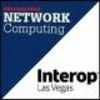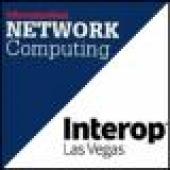25 Vendors Making Waves in IT Infrastructure
Enterprise infrastructure is changing fast. Here are some of the vendors leading the transformation.
November 20, 2017


IWK-Vendors2Watch.png
Technology changes fast, and today it's changing faster than ever to keep up with enterprise digital strategies. Companies are focused on leveraging technology for new products and services that give them an edge over the competition. IT teams must act quickly to keep up with the business demand for speed and new capabilities, but legacy architectures fall short, forcing them to look for new solutions.
For IT infrastructure, this means big changes and a shift away from old paradigms. Traditional gear such as dedicated servers,storage arrays, and network switches remain core elements in many environments, but IT organizations are increasingly looking to software, cloud, automation and open source. They're leveraging system software, automating processes, and adopting cloud-based services and platforms.
In the data center, companies are focused on managing workloads more efficiently both internally and externally. They're migrating some workloads to the cloud and using virtualization in their on-premises facilities to increase agility and cut costs.
Hypervisors have become commonplace and are giving way to container technology, which provides a more efficient and portable way to virtualize applications. New products and vendors are emerging to support, manage, and secure Docker and other container technologies.
Networking is evolving to keep up with the fast pace of digital transformation. An industry that had been distinguished by hardware speeds and feeds and manual configuration of boxes is shifting to a focus on software and automation. Legacy models have given way to software-based approaches that provide flexibility and agility in the cloud era.
Software-defined networking has gained traction in the service provider market and is making its way into the enterprise, albeit slowly. However, a closely related technology, software-defined WAN, is becoming a popular option for companies of all sizes looking to reduce costs and gain efficiencies. SDN and the ability to abstract network software from the underlying hardware have given rise to white-box and bare-metal options in which networking software, often open source, can be installed on commodity hardware.
Another emerging trend is intent-based networking, which incorporates machine-learning to orchestrate and automate network configuration, and provide visibility into network status.

digital-infra.jpg
Storage infrastructure also is transforming to keep pace with enterprise digital goals. Traditional storage arrays and storage area networks are no match for new demands spurred by the rise of big data and demand for real-time information and data analysis. IT teams are replacing traditional storage with new flash and solid-state products, adopting cloud storage, and experimenting with software-defined storage. Hyperconverged infrastructure streamlines data center storage by leveraging software to integrate compute and storage functions, typically in a single appliance on commodity hardware.
The disruption in the storage industry and never-ending demands have led to impressive developments, especially in terms of unstructured data awareness and storage performance for virtual environments.
Altogether, these emerging capabilities across storage, networking and the data center mean exciting times for IT infrastructure. The vendor landscape is filled established companies embracing software and service-based options, and startups offering a host of innovative technologies. If you're in the business of building or managing IT infrastructure, we've selected 25 hot companies for you to keep an eye on.
128 Technology (@128technology) offers a software-based approach to routing that's designed to eliminate the need for extra boxes for firewalls and load balancing.
A10 Networks (@A10Networks) originally sold load balancers, but has expanded its capabilities to address application performance and security across clouds and data centers.
Apstra (@ApstraInc) is an early pioneer in the new wave of intent-based networking with software that's designed to automate design and management of multi-vendor data center networks
Barefoot Networks (@barefootnetwork), led by Stanford University's Nick McKeown, has developed super-fast, programmable network switch chip.
Big Switch Networks (@bigswitch) offers a bare-metal switching fabric and SDN control software, primarily targeted at data center networks.
Cambium Networks (@cambiumnetworks) provides wireless broadband and backhaul to enable the internet of things and industrial internet applications in challenging locations.
Cumulus Networks (@CumulusNetworks) provides a Linux-based network operating system for white-box switches.
Dell Technologies (@DellTech) is an IT infrastructure powerhouse with its storage and virtualization business units, Dell EMC and VMware, plus its new division focused on the internet of things.
Forward Networks (@FwdNetworks) uses formal verification to make copy of an enterprise network in software that companies can use to spot misconfigurations and test changes before deployment.
Pluribus Networks (@Pluribusnet) offers a Linux-based SDN platform with the ability to gather real-time analytics and monitoring information.
Pure Storage (@PureStorage) provides flash-based storage to accelerate applications like server virtualization, desktop virtualization, database systems and cloud computing that require very high performance.
Primary Data (@primary_data), with a leadership team that includes industry icon Steve Wozniak, combines extensible metadata with telemetry in a storage platform that enables real-time automated data placement
Rubrik (@rubrikInc) offers an integrated backup appliance intended to simplify complex backup infrastructures across clouds with policy-based management and storage tiering.
SwiftStack (@SwiftStack) sells a commercial distribution of the open source OpenStack Swift object storage platform designed for private clouds.
SnapRoute (@snaproute), founded by former Apple network engineers, offers an open network operating system that network operators can customize.
Veriflow (@VeriflowSystems) offers software that uses mathematical verification to model and verify network policies in order to prevent breaches and network outages.
Versa Networks (@versanetworks), one of the last remaining pure-play software-defined WAN suppliers, has many service provider customers including Verizon and Comcast.
Get insight into infrastructure trends at Interop iTX in Las Vegas April 30-May 4, Register today!
About the Author
You May Also Like




